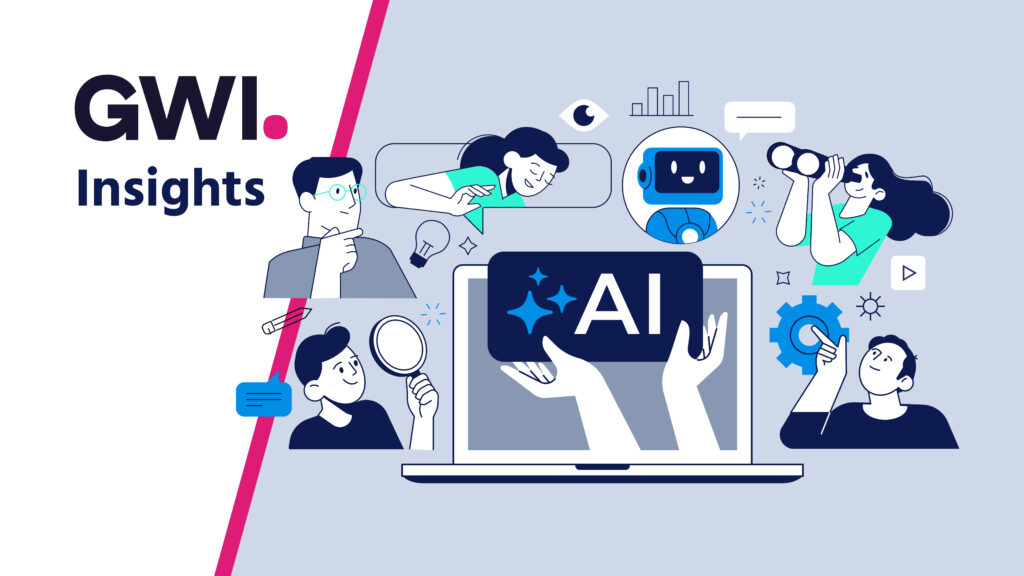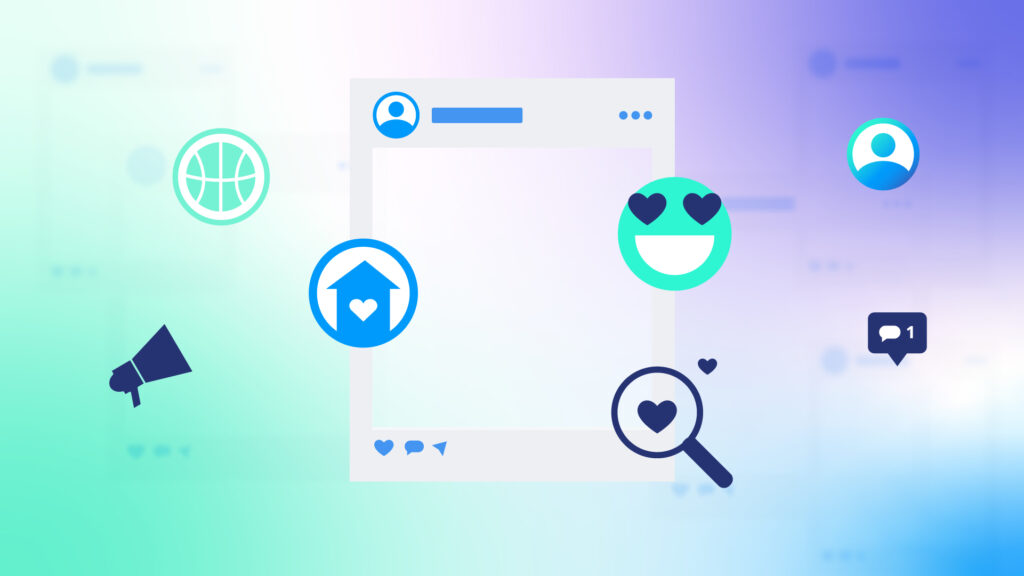
The Shift From Who to What: Understanding Social Media Interest Graphs

How was your last scroll on your social media app of choice? Did you have a quick, efficient trip through your feed or (like most of us) did you get sucked in for a fifteen- or twenty-minute jaunt that ended in a three-minute video on vintage cake recipes? As social user habits have changed, that kind of time commitment is only possible with the interest graph algorithm model—and it’s something you should be taking into account with your social strategy.
Social media’s start had a very defined purpose: keeping up with friends and family. If you’re a millennial or older, you likely remember this clearly—and you remember how resistant social media users were to algorithmic changes that moved more toward trending topics and user-indicated interests. However, short-form video’s meteoric rise to social strategy as well as search-based social trends (among other factors) has knocked old-school social algorithms off the radar. Interest graphs represent a pivotal shift away from traditional social graphs, offering new engagement opportunities for digital marketers. Let’s look at the latest algorithmic changes and what metrics to pay attention to when posting.
What is a Social Graph?
For years, social media success was measured by follower count, which directly impacted your overall reach and engagement levels. While this is still an important metric to nurture, it’s no longer the end-all-be-all gold standard. With a social graph, though, it determined how well your social posts would perform. Facebook pioneered this concept, connecting friends and family and fostering new connections between shared relationships. Social graphs gave local businesses a leg up with relevancy to the local community, but made finding a new audience more difficult.
However, the rise of influencers changed this dynamic, building new ways of connecting online focused on following unknown accounts that created content relevant to the individual user.
What is an Interest Graph?
The interest graph model connects social users with posts relevant to their interests. Social algorithms gather information based on metrics such as likes, watch time and shares to serve more similar content to the user. With this, you don’t need to follow someone in order to see their posts, though following someone does influence how often you’ll see their content.
Features like Instagram’s Explore page and TikTok’s For You page are perfect examples of the interest graph, though you’re seeing its concept more and more on virtually all social sites. Following-only feeds now tend to be opt-in features rather than the expected default option.
For digital marketers, there’s a real opportunity to grow by simply using modern best practices to manage your social presence and find your niche audience.

Further Factors: Connected vs. Unconnected Reach
The difference between social and interest graphs comes down to one main theme: connection.
Social Graphs
- People-to-people
- Reciprocal posting relationship
- Difficulty discovering new content
Interest Graphs
- People-to-interests
- Asymmetric posting relationship
- Built-in ways to find new relevant content
How people discover content is vastly different from one model to another. Content discovery in social interest graphs is more fluid than simply seeing what followed accounts post. Algorithms take your user interests into consideration, serving up content that your followed accounts engaged with, that your actions on the app indicate you may be interested in or that is simply trending across the site at the moment.
It’s much more complex than the social graph method of content discovery, which relied almost exclusively on followers interacting with (and preferably resharing) your posts.
The relationship between follower and followed account also varies wildly with interest graphs.
What Is the Difference Between Social Graphs and Interest Graphs?
Within interest graphs, two types of reach affect how your content makes it to social users. Instagram has been open with their definition for this differentiation, which they call connected and unconnected reach. Let’s define each term:
Connected reach: Content shown to your existing followers
Unconnected reach: Content shown to audiences beyond direct connections (non-followers)
So why do these two algorithmic factors matter? Let’s use Instagram as an example to explore.
Connected Reach
With connected reach, or current followers, likes carry more weight. This makes sense—Instagram followers are likely to see your content on their main feed, where they’ll throw a heart and maybe a comment your way before continuing to scroll. This means your content will be more likely to appear for that particular user more often.
Unconnected Reach
Unconnected reach really comes into play on the Search or Explore tabs on Instagram. With this audience, sends and saves are more important for continued engagement. Again, this lines up with likely use cases—how often have you saved a recipe post or sent a shared link from a Meta app or TikTok in your group chat? Shares show that your content resonated enough to warrant showing others, some of whom may not even be on the app. That kind of reach is incredibly valuable.
While we may not have details on how most social apps’ algorithms work, we can use what Instagram has shared about their algorithmic logic to make informed decisions on your posting strategy and what metrics to prioritize. We broke down insights into their algorithm in more detail here.
What Else Is Influencing Your Algorithmic Ranking?
There’s more than just likes and shares at play with how social algorithms prioritize and share your posts. What you’re posting, when you’re posting it and how your audience is engaging with it also impact how unconnected audiences—and future customers—can see your content.

Watch Time
How long are audiences staying on your videos? The more time someone spends watching them, the better your content performs.

Quality Indicators
Putting out quality content is obviously the goal, but how quality is defined changes over time. For instance, make sure you aren’t putting watermarks on your videos. This used to be a common practice, but now penalizes your content.

Make Original Content
This, again, seems like an obvious choice, but it might be tempting to hop on a trending topic and roll the dice on performance. Follow where your branding leads you.
From Who You Know to What You Love: Why Interest Graphs Matter
Interest graphs present a great opportunity to strengthen your brand audience—if you’re careful. The opportunity to reach a lot of new eyes, even with a small following, has never been more possible. Plus, your brand can connect with your existing audience in a way that feels fresh. Authenticity is something many audiences crave with social content, and once you’ve established that connection, it can lead to consumer trust and, of course, more sales. Curious how your brand’s social strategy can thrive? Drop us a line. We’d love to chat.
CONTACT US
Work With TriMark
We don’t do one-size-fits-all. We build custom strategies that solve real business problems and drive results you can measure. Let’s talk about how we can grow your brand—starting today.
Keep Reading
Discover What Drives Results

